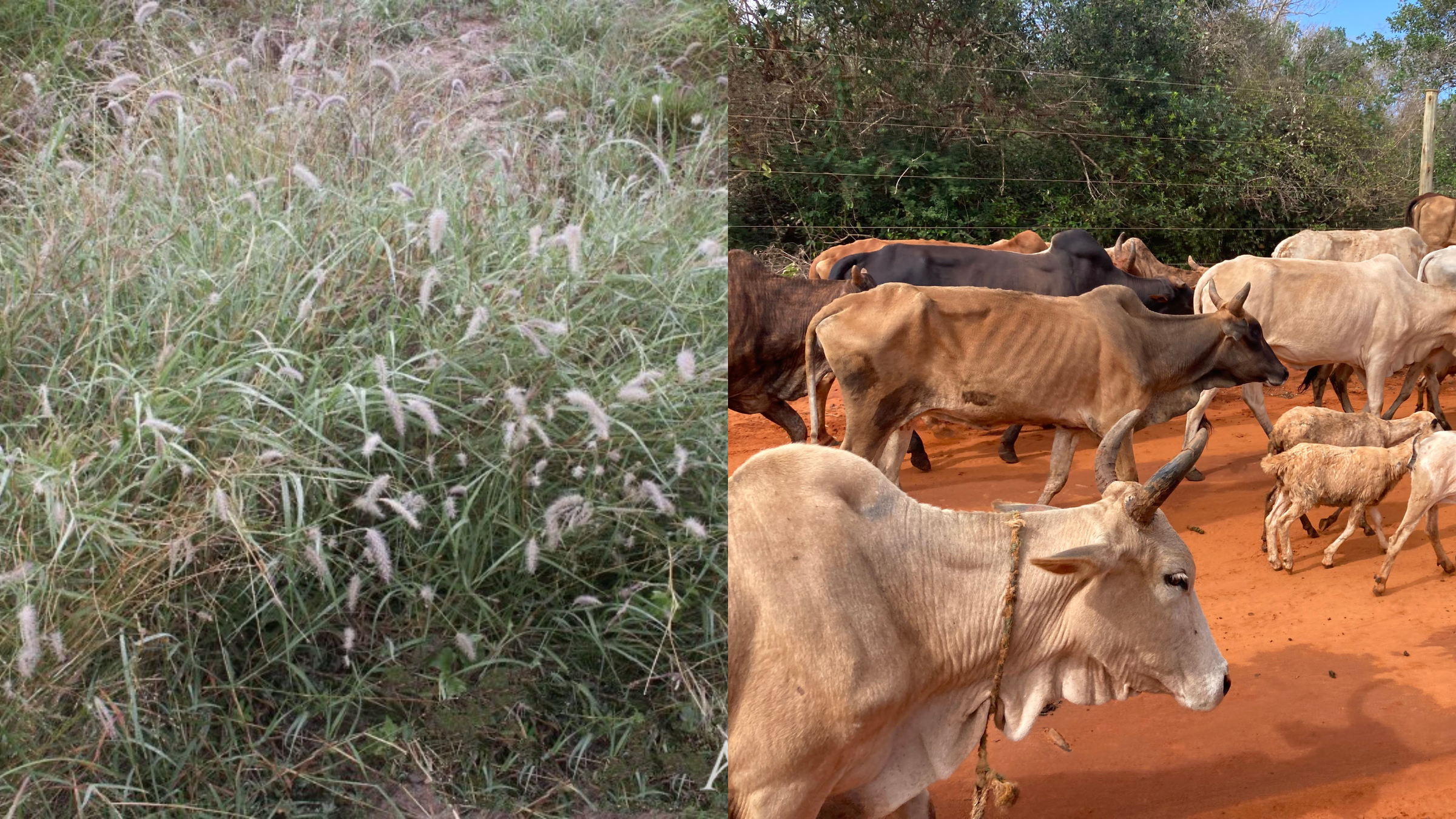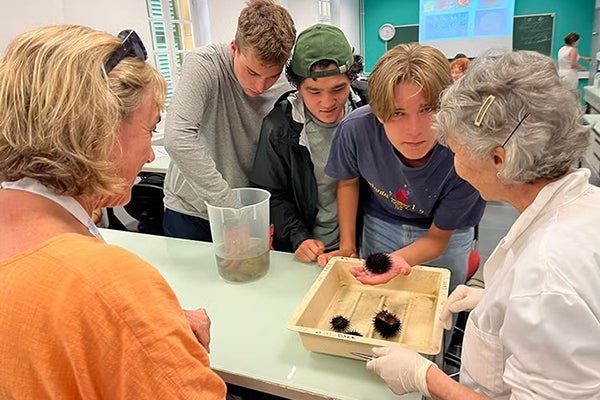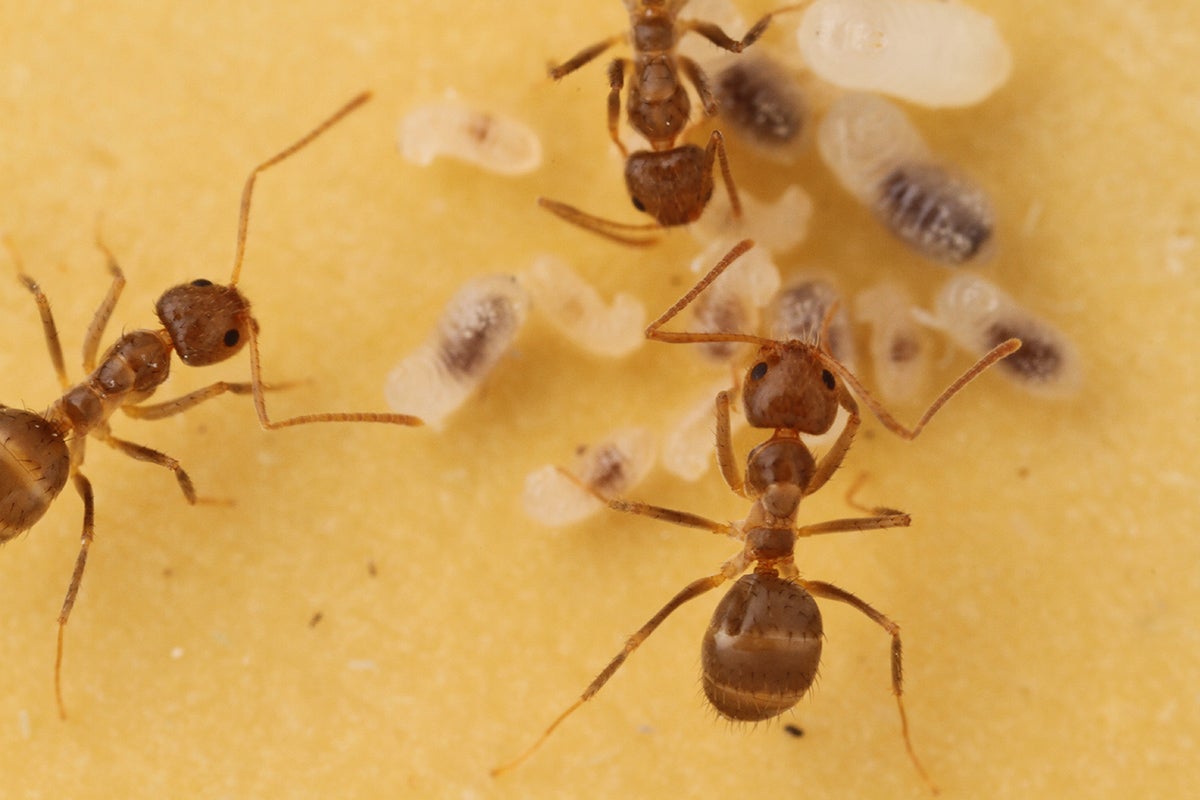Targeted Grazing May Help Beat Invasive Buffelgrass
Researchers head to Kenya to unlock the weaknesses of invasive buffelgrass to combat it here in Texas.

Left image: Texas A&M Agrilife Extention. Right image: The University of Texas at Austin.
Buffelgrass, a type of perennial grass native to Africa, was brought to the U.S. in the 1930s to feed cattle and help control erosion in arid climates, such as South Texas. While many cattle ranchers are fans of the grass, land managers and ecologists have been trying to figure out how to control it ever since because it aggressively pushes out iconic native species like the northern bobwhite quail and makes wildfires more frequent and severe. It contributed to the 2023 wildfire in Lahaina, Maui that burned 2,100 acres and killed more than 100 people.
Researchers with The University of Texas at Austin’s Brackenridge Field Lab decided to go to the heart of buffelgrass’s native habitat in Kenya to learn more about the species and what might help to control it back in Texas. Their findings are highlighted in a recent paper in Ecology and Evolution.
It turns out, the very same animals the grass was brought over to feed might be part of a solution to keeping it contained.
“In its home range, buffelgrass has a lot of natural enemies: fungal disease, stem-boring insects, certain climate conditions, but the one that had the biggest impact was grazing species like cattle,” said Aaron Rhodes, research scientist in the Department of Integrative Biology at UT Austin. “When a species is freed from its natural enemies, that’s when it can become invasive. By understanding what factors have the biggest impact in the grass’s home range, we can better understand how to control it.”
Buffelgrass is one of the most popular pasture grasses in parts of the southern U.S. where beef production is a big part of the economy. Unfortunately, when buffelgrass sneaks under the pasture fence, it can spread quickly. Native wildlife doesn’t typically eat buffelgrass and it can even be noxious to horses.
By outcompeting native plant species, buffelgrass can reduce biodiversity in critical ecosystems and the grass can provide dangerous fuel for wildfires. Similarly to the Lahaina fire, buffelgrass is thought to be a contributor to the 2008 wildfire on the Chaparral Wildlife Management Area in Cotulla, Texas that burned nearly 15,000 acres.
“It’s a balancing act,” Rhodes said. “Buffelgrass is a popular forage species for livestock producers, but it contributes to biodiversity loss and wildfire risk.”
As part of the new study, researchers created controlled areas at Mpala Research Centre in Kenya in order to study how buffelgrass is affected by each of its natural enemies and by different combinations of enemies. During the study, researchers observed that drought then higher than normal rainfall, combined with a fungal disease called smut, and a stem-boring insect reduced buffelgrass. But grazing from native ungulates (hooved mammals) and domestic cattle, camels, goats and sheep proved to be more impactful.
“In the absence of classic biocontrol, targeted grazing by livestock may be an effective way to control buffelgrass in the U.S.,” Rhodes said.
Rhodes and some of his fellow UT researchers previously discovered how a different invasive grass species in Texas, guinea grass, uses chemical warfare to crowd out native species. In sum, invasive grasses are changing the American landscape, from Maui to South Texas.
Robert Plowes, Elizabeth Bowman and Lawrence Gilbert of UT Austin, Aimee Gaitho and Dino J. Martins of Nature Kenya in Kenya and Ivy Ng’Iru of the UK Centre for Ecology and Hydrology were also authors on the paper. Funding for the research was provided by the Lee and Ramona Bass Foundation as part of a $6 million grant to help UT Austin scientists study invasive species.



